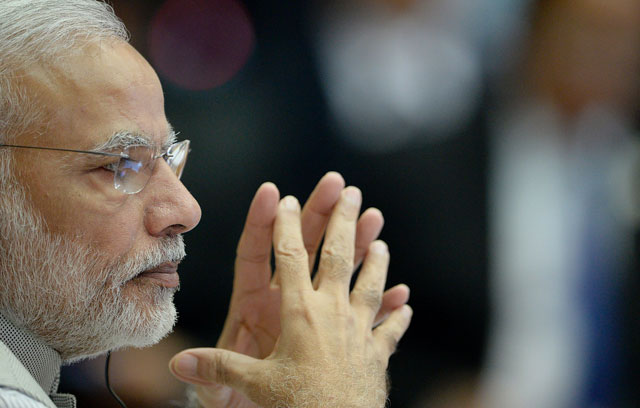
ISLAMABAD: As he scaled down his war rhetoric on Saturday, India’s Prime Minister Narendra Modi dared Pakistan to eradicate poverty before his country. This challenge, however, would not be easy for him to win because World Bank data shows India will have to do a lot more than Pakistan in order to win the ‘war against poverty’.
At home, meanwhile, Modi’s challenge drew a sharp rebuke on Sunday from leaders of India’s own main opposition party. Congress leader Meem Afzal urged Modi to redirect his attention to India’s own challenges. “Modi ji, instead of giving suggestions to Pakistan, focus on what is happening in your own country,” he said. “No proper development is visible… you promised 100 million jobs in five years but you haven’t even created 50,000.”
Modi threatens to 'isolate' Pakistan globally

Afzal has rightly advised Modi to put own house in order before throwing challenges to Pakistan. The World Bank databank and its report on ‘Addressing Inequality in South Asia’ suggest Pakistan fares far better than India in terms of people living below the poverty level, even though, overall human development indicators are worse in both countries compared to other developing nations.
While 8.3% of Pakistan’s population – some 14.1 million people – lives in poverty according to World Bank’s new $1.90 a day threshold, a staggering 21.3% in India – more than 260 million people – are destitute, showing Modi will have a harder time winning his own challenge.
The World Bank updated its traditional a dollar a day poverty line to $1.90 last year after changes in its purchasing power parity index, which was also updated from the 2005 level. The purchasing power parity index provides a fair idea of the extent of deprivation in countries, as all the countries apply different techniques to work out national poverty lines.
Against a stricter $3.10 a day poverty line – which World Bank also updated from the previous $2 a day criteria – 58% of India’s population or 708 million Indians live in poverty compared to 45% of Pakistan’s population or 76.5 million Pakistanis. The number of poor Indians according to this level is three-and-a-half times more than Pakistan’s total population.
India’s Uri evidence fails to convince US: officials
“India and Pakistan have to rise to the occasion and work together to bring out millions of people out of the net of poverty and hunger. The China-Pakistan Economic Corridor can become a common platform for them,” said Dr Naeemul Zafar who till recently was working as member Social Sector for Pakistan’s Planning Commission.
Independent economists say that compared to Pakistan, India needs a much higher economic growth rate to take millions of people out of poverty. The other reason is that in India inequality was far higher than in Pakistan, which showed that the Indian growth model was not inclusive.
Education and health inequality in India is higher than in Pakistan, according to a World Bank report on addressing inequality in South Asia. Both the countries perform poorly on the Human Opportunity Index (HOI) and both have been dubbed as ‘low middle income nations’ by global financial institutions like the International Monetary Fund and the World Bank.
The extent of inequality in access in these two countries has consistently remained the highest in the region and has only decreased slightly over time, said the World Bank.

The report showed how worse the region was on human development indicators. The report finds that despite not being the poorest region in the world, South Asia has some of the worst human development outcomes worldwide. The comparison is even more dramatic when focusing on the outcomes of the poorest quintile.
The share of children under five who are stunted among the poorest quintile is above 50% in Bangladesh and Nepal and reaches 60% in India. India and Pakistan also have some of the highest infant mortality rates and under-five child mortality rates among the poor across all comparators. Of 1,000 children born in Pakistan’s poorest population quintile, 94 will die within 12 months and 120 within five years.
Modi — still going strong
Gaps in neonatal mortality (death within the first 28 days of life) and in under-five child mortality (death within the first five years of life) between the top and the bottom quintiles are large, especially in India and Pakistan, said the World Bank.
South Asian countries also spend less on education than other countries at a similar level of development. In particular, Bangladesh, India, Pakistan, and Sri Lanka all sit far below the international trend line between public spending on education and income level, according to the World Bank report.
India’s public spending per student on primary education puts it among the lowest quintile of all the regional countries, said the World Bank. Its public spending per student on secondary education is higher but still falls below the average of comparators.
The lender has advised that things need to change for South Asia to double its growth to 9%. Unless governments can raise more tax by broadening the base and spurring private sector development, South Asia will not end poverty and boost shared prosperity.
Despite being low middle-income countries, India and Pakistan heavily spend on their defense needs due to rivalry between them. An annual report by the Stockholm International Peace Research Institute (SIPRI) revealed that India featured number six on the highest military spending list, up a rank from its position of the previous year. The SIPRI data puts Pakistan’s military expenditure in 2015 at $9.5 billion, higher than the previous year’s $8.7 billion. In comparison to that, India's military spending in 2015 was $51.3 billion.
Published in The Express Tribune, September 26th, 2016.

























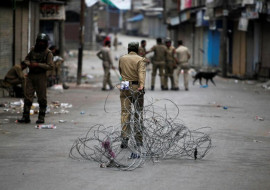

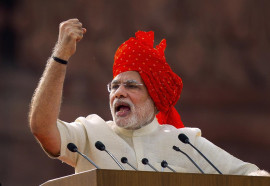
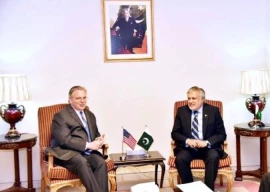
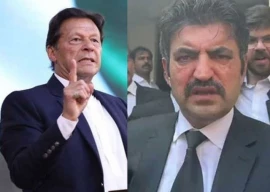
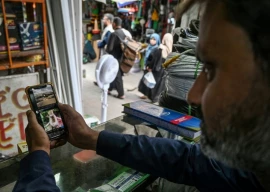
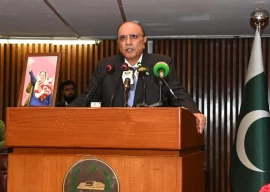























COMMENTS (12)
Comments are moderated and generally will be posted if they are on-topic and not abusive.
For more information, please see our Comments FAQ